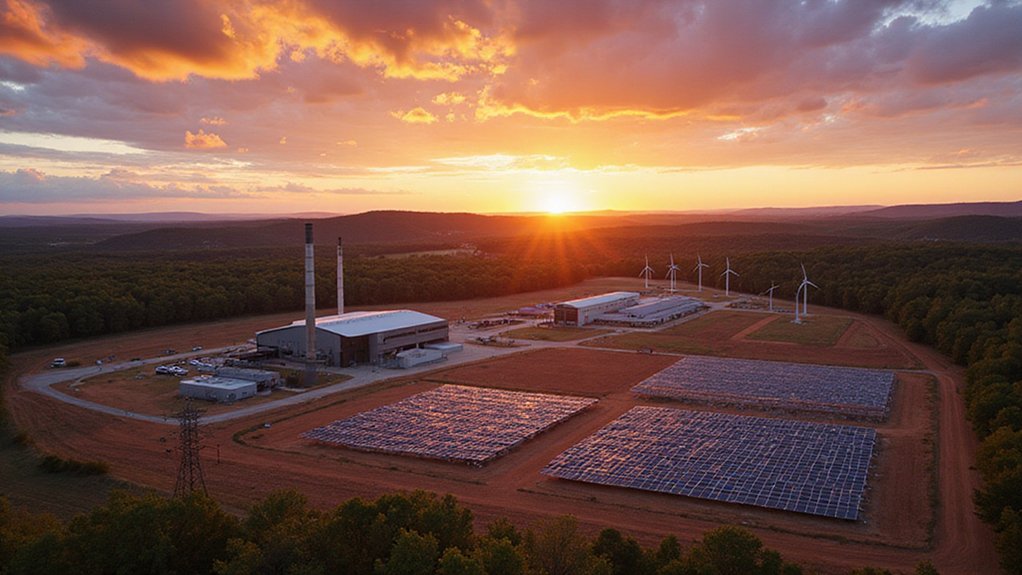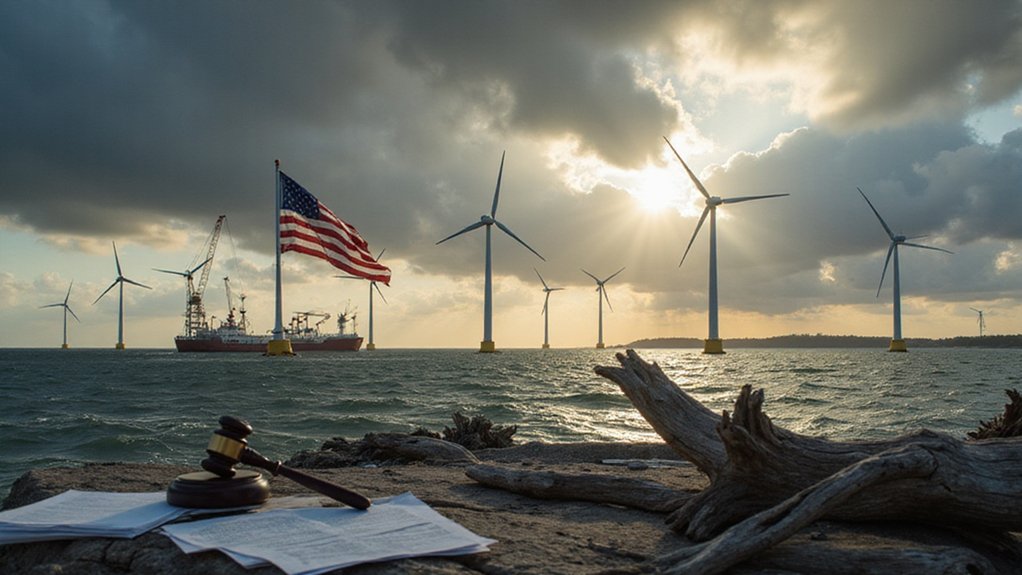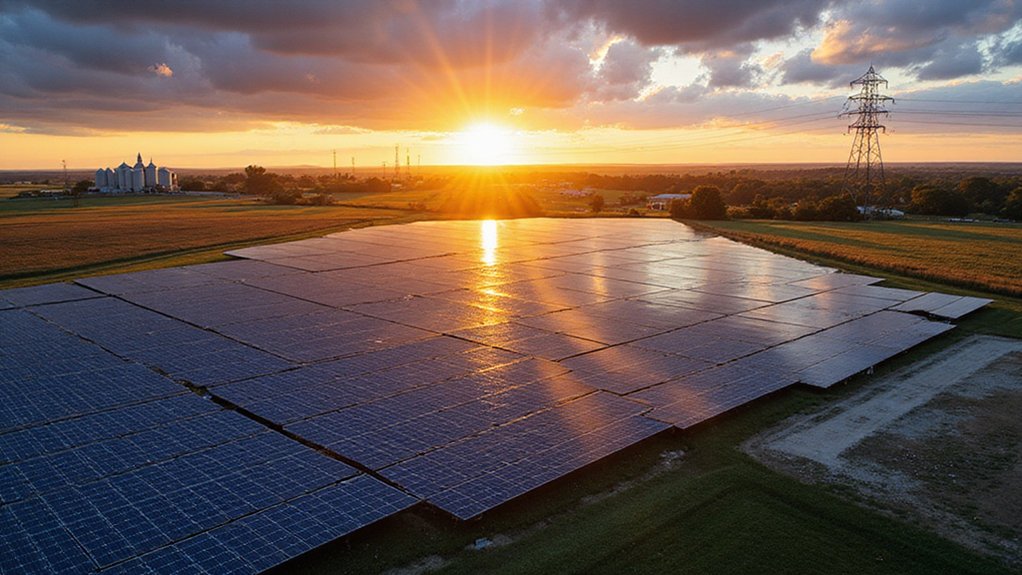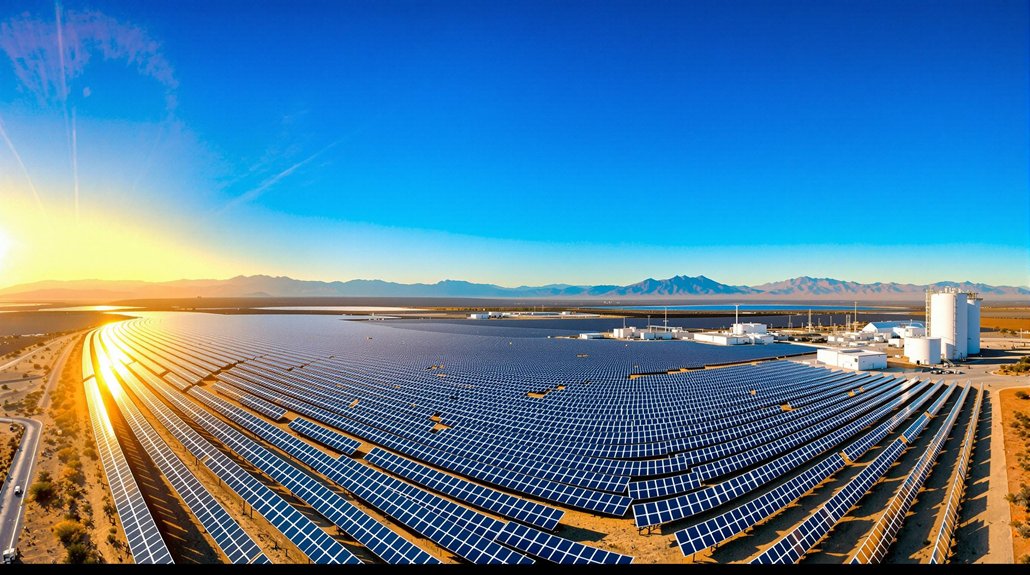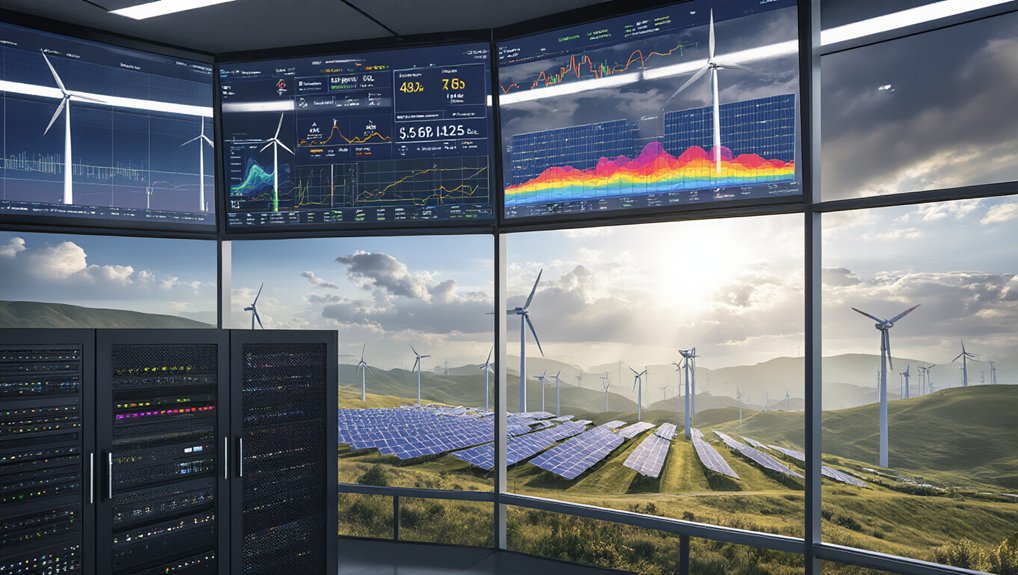Georgia’s clean energy transformation stems from multiple contributors, not a single hero. The Inflation Reduction Act provided essential funding while state policies created favorable conditions. Companies like Hyundai and QCells invested billions, creating over 16,000 jobs. Georgia Power’s plans to close coal plants mark significant progress, though some criticize the lack of new solar development. The economic benefits and environmental impacts continue to shape this complex evolution across the state.
How is Georgia transforming its energy terrain? The Peach State has seen remarkable growth in clean energy investments, creating over 16,000 new clean energy jobs in just one year. Since August 2022, more than 20 additional clean energy projects have launched across the state.
Major companies are taking notice of Georgia’s potential. Hyundai invested billions in Atlanta for clean energy development, while QCells expanded its operations in Cartersville. These investments are part of the Inflation Reduction Act‘s clean energy provisions, which will pump more than $18 billion into Georgia’s economy.
Georgia’s clean energy boom attracts major players like Hyundai and QCells, fueled by IRA provisions set to inject $18+ billion into the state economy.
Georgia Power, serving over 2.8 million customers, plays a key role in this changeover. The utility filed its 2025 Integrated Resource Plan (IRP) on January 31, outlining future energy investments. This plan includes closing two coal-fired power plants by 2025 and adding 2,600 megawatts of natural gas generation. This reflects the nationwide trend where coal’s share of electricity generation has plummeted from 51% in 2000 to just 15% by 2024.
However, Georgia’s energy path isn’t without controversy. The newly approved plan for 2025 excludes new solar infrastructure, marking a shift in the state’s renewable strategy. The Georgia Public Service Commission (PSC) approved this plan, showcasing its regulatory oversight of Georgia Power‘s long-term planning. Experts suggest increasing warehouse solar installations represents a missed opportunity for commercial clean energy development.
Environmental impacts remain a concern for many Georgians. Under a Project 2025 scenario, Georgia would emit nearly 15 million metric tons of carbon dioxide in 2030, equivalent to emissions from four to seven coal plants in one year. By 2035, emissions would be nearly 27 MMT more than under current policies.
Financial considerations also affect Georgia families. The Project 2025 scenario would increase annual energy costs by more than $180 per household by 2030. In contrast, current clean energy policies aim to lower costs and improve infrastructure resilience. Through the Inflation Reduction Act, families can access up to $14,000 in rebates for energy-efficient home upgrades.
As Georgia continues its clean energy journey, stakeholders including Georgia Power, the PSC, and advocacy groups like Southface (represented by the Southern Environmental Law Center) will shape the state’s energy future, balancing economic growth with environmental concerns and consumer costs.
References
- https://energyinnovation.org/wp-content/uploads/2024/09/How-Project-2025-Could-Affect-Georgia.pdf
- https://thecleanenergyplan.com/clean-energy-plan-brings-new-jobs-lower-costs-to-georgia/
- https://www.georgiapower.com/content/dam/georgia-power/pdfs/company-pdfs/2025-Integrated-Resource-Plan.pdf
- https://www.southface.org/sustainability-issues-to-watch-in-georgias-2025-utility-plans/
- https://www.pvknowhow.com/georgia-power-energy-plan-2025-excludes-solar/
